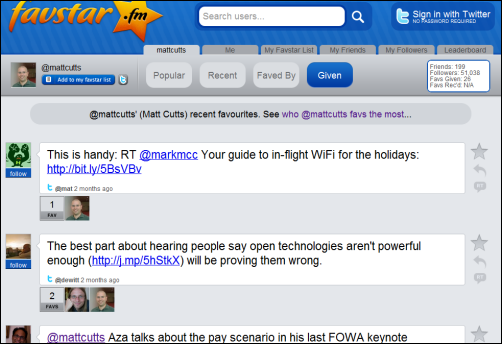 “If you don’t eat your meat you can’t have any pudding. How can you have any pudding if you don’t eat your meat!” Pink Floyd, The Wall.
“If you don’t eat your meat you can’t have any pudding. How can you have any pudding if you don’t eat your meat!” Pink Floyd, The Wall.
That quote from Another Brick in the Wall reminds me of the cart horse situation with social media and influencer marketing: If you don’t know your customers you can’t engage them. How can you ever hope to engage your customers if you don’t understand who they are?
There are so many questions from marketers and agencies alike about how best to grow businesses through online channels. Questions are particularly popular when it comes to best practices for social tools. “Always do this” and “always do that” is what most marketers have been bombarded with for as long as there have been conferences to attend and email newsletters to subscribe to.
Inevitably, many of the most pressing questions about social media come down to understanding who you’re trying to reach. For example, some common questions I hear a lot at conferences:
Q: Should we blog or focus on Twitter? Is Facebook or LinkedIn a better fit? Foursquare or Gowalla? (Or other shiny object)
A: Find where your customers spend their time and spend your time there too.
Q: What type of social content should we create? How often? Where?
A: Study your customers as they create, consume and share content. Then you’ll know the what, how, when and where. They why has to come from your organization.
Q: What is the most overrated social media site?
A: The one your customers aren’t using.
So much time is spent on tactics without a good understanding of goals, audience and how to measure success with social media programs. As we discuss Roadmapping social participation with companies, audience research is one of the key areas of importance. As I mention above, how can you reach and engage customers if you don’t understand them?
Let’s say you’ve used a social media monitoring tool like SM2 to identify who is talking about your brand and topics of importance to your prospects and customers. Within this analysis, you’ve noticed that there’s alot of activity on Twitter.
A logical next step might be to further investigate influential Twitter users. If a paid tool like Radian6 or SM2 don’t fit your budget you can try free tools Trackur or Social Mention to gain some insight into content types, commentary and sharing/publishing platforms.
Other tools you might use to identify influentials on Twitter include directories like wefollow.
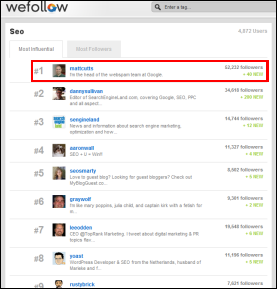
Under the tag, “SEO” you can see that Matt Cutts is the most influential. Since reaching out directly to a popular person on Twitter, especially a Google employee, might not be prudent, it can be helpful to learn more about that individual and who they are influenced by as well as who they influence.
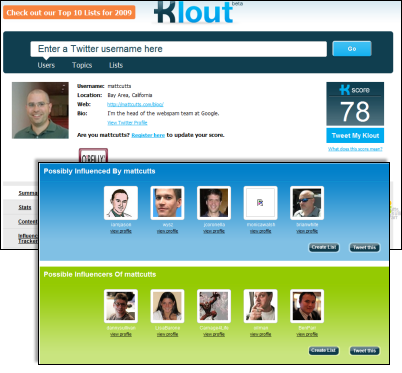
Using the site Klout, you can see a Twitter influence score (78 is pretty high) and other information including predictions on who is most influenced by Matt and more interestingly, who may be an influencer of Matt Cutts.
There are other tools that show communities surrounding an individual such as Top Twitter Friends.
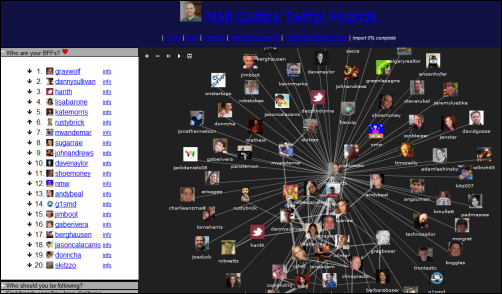
As for understanding what kind of content someone likes on Twitter, you can look at retweets and @ responses. You can also look at what kind of content and what user tweets get favorited most,. Favstar is a tool that does just that.
In this example, Favstar shows which Tweets Matt Cutts has favorited. The types of content and users can be noted for guidance with future outreach.
I mentioned free social media monitoring tools above including Social Mention. Below is a screengrab that shows how much information you can get from Social Mention with options to download into Excel friendly formats.
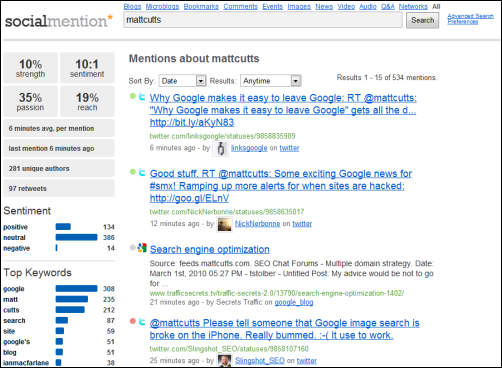
Other Twitter user analysis tools worth looking at include Twitter Analyzer and Twitalyzer.
The basic tools I’ve shared here are just that, basic. They’re good for poking around and getting familiar with discovery of social content and influencers. However, it would take a more robust tool set (which is what Agencies and larger companies do) to scale monitoring over many topics, influencers and conversations.
Other customer social media research tactics include:
- Survey your existing customers for social preferences and behaviors
- Review web analytics for social media sources and behaviors
- Tap into Compete, Quantcast, Alexa information on specific social sites
- Leverage profile information provided by advertising staff on social sites themselves
In combination with directly observed and experienced customer behaviors and preferences, general site data can compliment understanding of customer social content needs. What are some tactics and tools you’ve found useful for researching customers on the social web?
